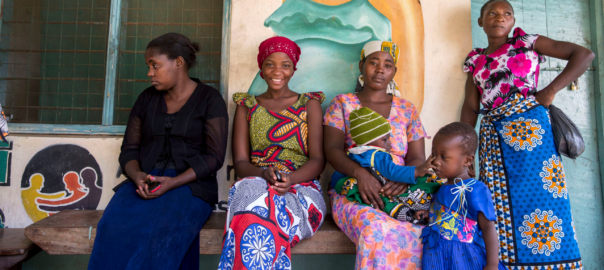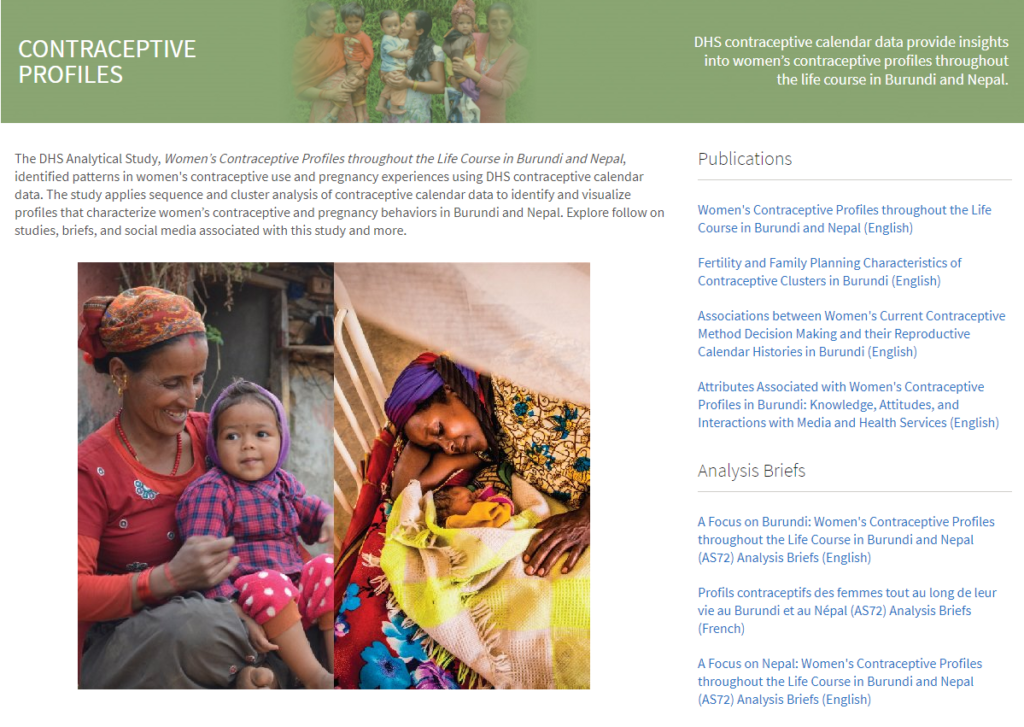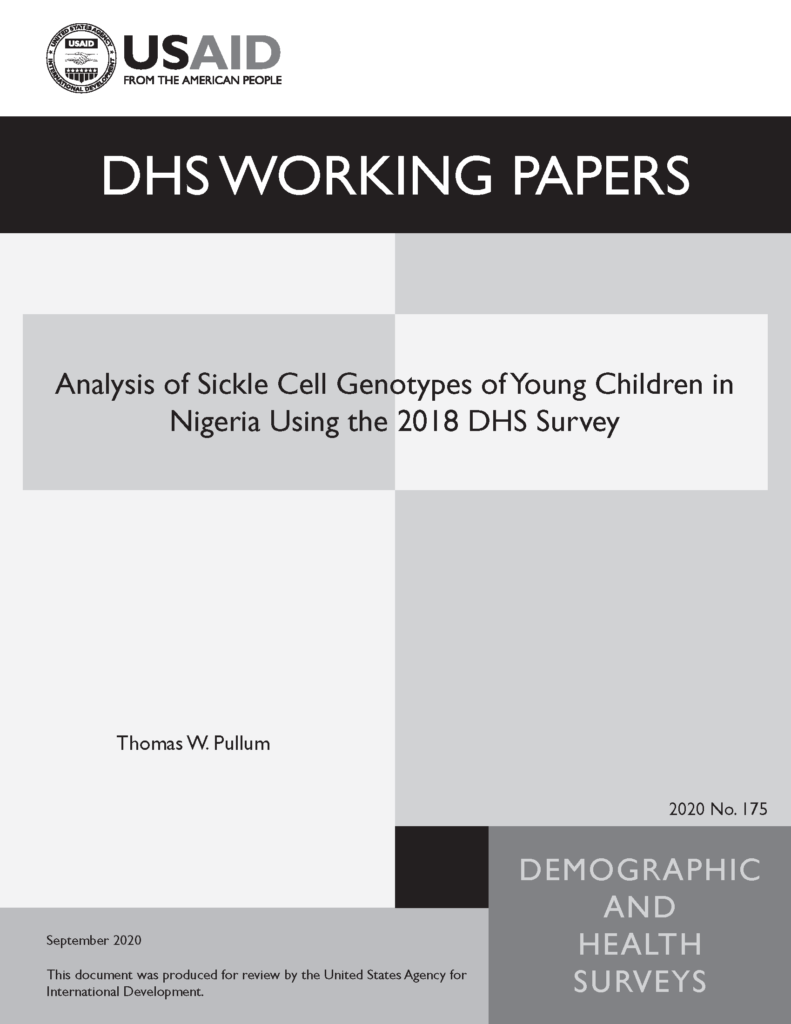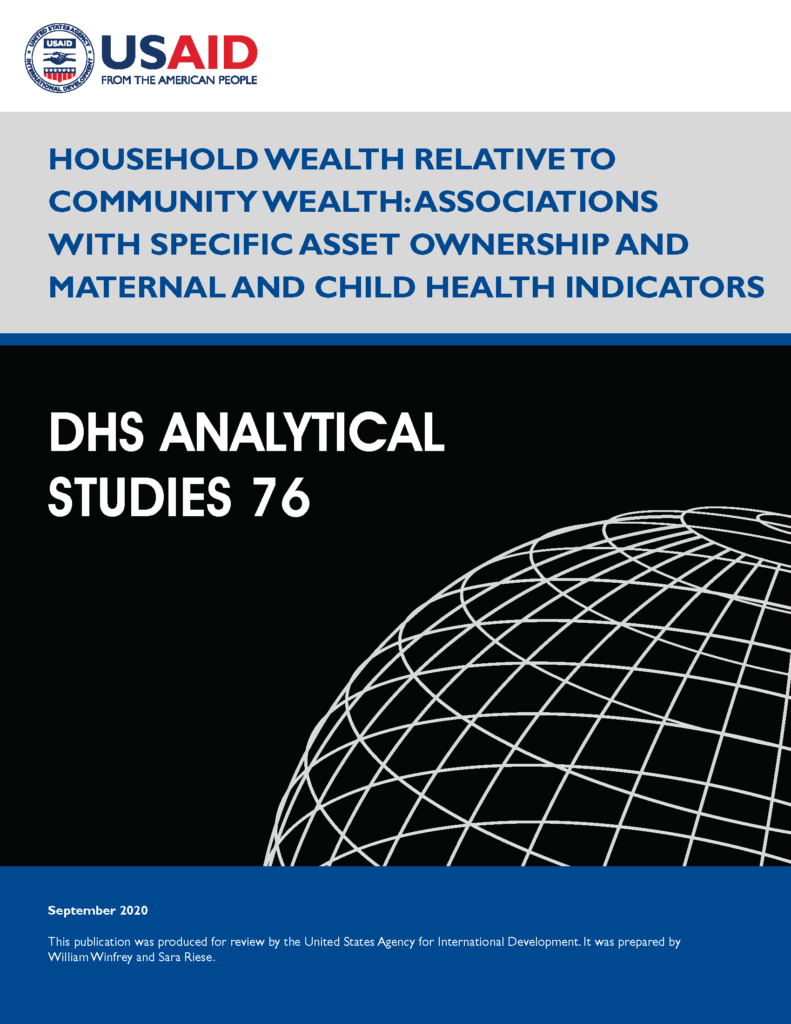DHS Program Analysis Updates: Fall 2020

The DHS Program Research and Analysis team has recently published several studies that analyze new DHS data or employ novel approaches to analyze existing DHS data.
Analysis of New Sickle Cell Data
The 2018 Nigeria DHS includes sickle cell genotyping of a subsample of 11,186 children age 6-59 months, the first population-based household survey to do so at a national level. A new Working Paper, Analysis of Sickle Cell Genotypes of Young Children in Nigeria Using the 2018 DHS Survey, finds that the siblings of genotyped children with sickle cell disease are about 2.5 times as likely to have died as the siblings of other genotyped children. The main value of the data is the description of the spatial distribution of the genotypes within Nigeria. The S and C alleles, which result in sickle cell disease, sickle cell trait, or Hemoglobin C trait, are primarily concentrated in states in the South West Zone, including Lagos, and secondarily in the North Central Zone. This information is helpful for estimating the burden of risk and for prioritizing interventions in different areas of Nigeria.
New Insights Into Wealth Inequality Using DHS Wealth Index Data
DHS surveys include a wealth index, a composite measure calculated using easy-to-collect data on a household’s ownership of selected assets. The DHS wealth index categorizes households into five wealth quintiles. In Household Wealth Relative to Community Wealth: Associations with Specific Asset Ownership and Maternal and Child Health Indicators, researchers computed an additional measure of wealth inequality, calculating a mean wealth score for each sampling cluster. Each household was then categorized according to its wealth relative to the average wealth of the community.
In 9 of 10 countries, households that are poor relative to their communities were more likely to use at least one maternal health care (antenatal care and facility delivery) or vaccination service, suggesting that a household that is poor relative to the community is potentially better able to access the services of a relatively wealthy community. Read the analysis brief for this Analytical Study, a user-friendly summary of the methods, key findings, and relevant action steps. Analysis briefs are available for many recent analytical reports from The DHS Program.
New Analysis of DHS Contraceptive Calendar Data

A new web feature highlights a series of publications that put to new use retrospective, longitudinal data from DHS contraceptive calendars. Three working papers were recently published. In Fertility and Family Planning Characteristics of Contraceptive Clusters in Burundi researchers apply sequence and cluster analysis to identify six discrete clusters that characterize women’s dynamic contraceptive and pregnancy behaviors over the previous five years. Factors most consistently associated with cluster membership are the need for family planning, lifetime experience of contraceptive use, marital status, pregnancy experience, and age.
Additionally, two working papers, Associations between Women’s Current Contraceptive Method Decision Making and their Reproductive Calendar Histories in Burundi, and Attributes Associated with Women’s Contraceptive Profiles in Burundi: Knowledge, Attitudes, and Interactions with Media and Health Services, further explore two “Family Builder” clusters. Women from the Family Builder 1 cluster had higher relative risks of deciding jointly whether or not to use contraception with their partners or husbands than of not deciding about contraception. Moreover, both “Family Builder” clusters are characterized by the presence and differences in the timing of multiple pregnancies in their calendar histories. Women with high contraceptive knowledge, intentions to use contraception, and well-articulated family size ideals are characteristic of Family Builder 1, while low contraceptive knowledge, no use of contraception, and vague family size preferences are characteristic of Family Builder 2. These results can guide reproductive health programs as they target interventions to the unique subpopulations they seek to serve.
Find all recent analysis publications in our latest newsletter and on The DHS Program website.
Featured image © Jonathan Torgovnik, Getty Images, Images of Empowerment



